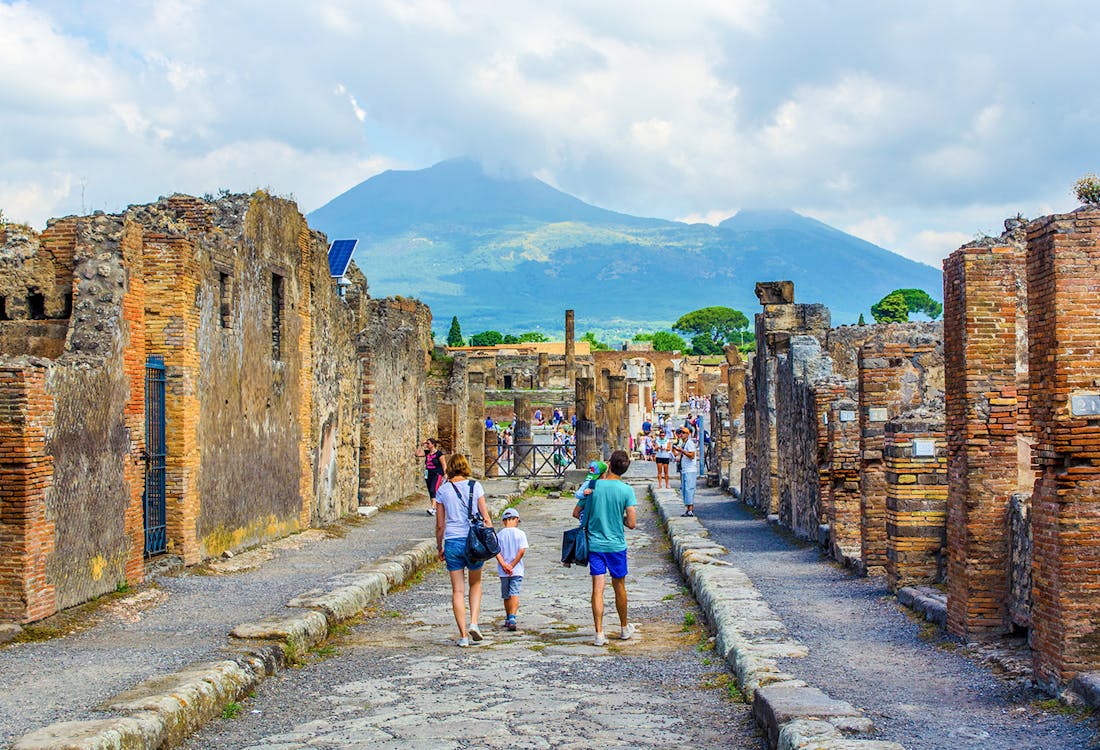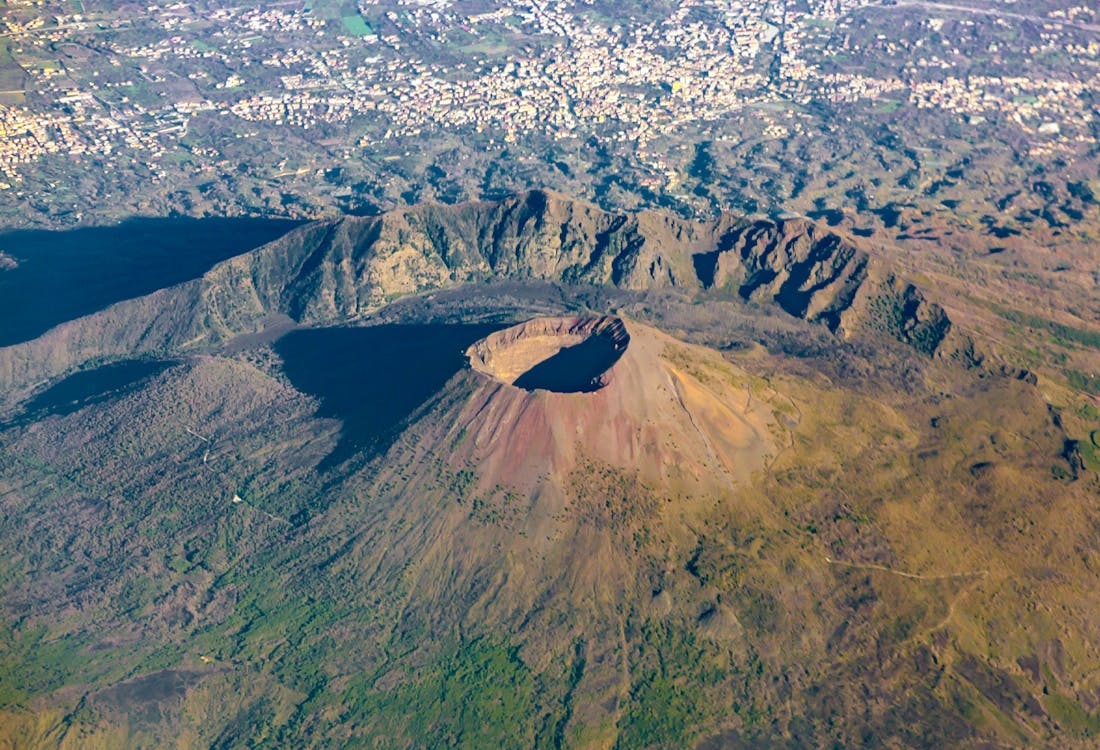Pompeii's history is both captivating and tragic. This ancient Roman city passed through the hands of various civilizations before being devastated by the catastrophic eruption of Mount Vesuvius, which buried the city in ash and pumice. Archaeologists have painstakingly excavated and restored the site, transforming it into one of the world's most popular archaeological destinations. The ruins offer a unique glimpse into the daily lives of the city's inhabitants, frozen in time by the volcanic cataclysm. Before embarking on a journey to Pompeii, delve into its fascinating history to fully appreciate the significance of this extraordinary place and the events that shaped its fate. This blog post provides a concise overview of Pompeii's past, setting the stage for an unforgettable visit to this iconic site.
Recommended tickets to Pompeii
Brief History of Pompeii
Pompeii is located in the administrative region of Campania in southwestern Italy, along the Bay of Naples known for its picturesque coastline. The Samnites, Oscan-speaking people, first called this city home in the 8th century BC, though Greeks and Etruscans had previously used the area as a port. The Greeks took control after their naval battle of Cumae, forging an alliance with Pompeii and influencing its early development. As trade shifted to larger Magna Graecian cities, Pompeii's importance waned, and Samnite settlers from the Apennines resettled the city. Roman involvement began only in the early 1st century BC, when Pompeii and other Samnite towns allied against Roman control, leading to the Social Wars from 89 to 80 BC. After Rome's conquest, Pompeii flourished once again as a trading hub, with rebuilt houses and iconic Roman structures like the Forum. However, the catastrophic eruption of Mount Vesuvius on August 24, 79 AD, sealed the city's fate, burying Pompeii under a thick layer of volcanic ash and pumice. The city remained hidden and forgotten for centuries until its rediscovery in 1748.

About Mount Vesuvius
Mount Vesuvius, standing at 1281m since its last eruption in 1944, had remained dormant for centuries before the catastrophic AD 79 disaster. However, the volcano has erupted nearly three dozen times since, with many recorded eruptions occurring between 1600 and 2000. One of the most devastating was in 1631, claiming around 3,000 lives. Most recently, Vesuvius erupted continuously from 1913 to 1944, engulfing several towns, notably San Sebastiano, in slow-moving lava flows that allowed time for evacuation. Today, approximately 3 million people reside in the volcano's vicinity, with 1 million living in the "Red Zone", an area vulnerable to an eruption of the same magnitude as the AD 79 event. The current evacuation plan aims to relocate over 700,000 people within a week, relying on a two-week advance warning of an impending eruption.

Pompeii: Timeline of events
-
8 BC
Archaeological evidence suggests the Samnite people inhabited Pompeii in its early history, prior to Roman rule.
-
6 BC
The ancient city of Pompeii was originally founded by the Samnites, an Italic people who inhabited south-central Italy.
-
525 BC to 474 BC
The Etruscans and Greeks battled for control of the region.
-
474 BC
Greeks take control of Pompeii.
-
1 BC
Roman involvement begins.
-
89 BC
The Campanian cities, which were allied with Rome, petitioned the Roman government for citizenship after Rome gained control over all of Italy.
-
89 BC to 80 BC
The Social Wars, lasting from 89 to 80 BC, resulted from social conflicts in ancient Rome. In 89 BC, the Roman dictator Lucius Cornelius Sulla besieged the city of Pompeii. Lucius Cluentius, the leader of the Social League (a Campanian alliance), successfully led the resistance against Sulla's forces.
-
80 BC
The Roman troops led by Sulla successfully besieged the nearby city of Nola, forcing the Social League to surrender. As a result, Nola was fully incorporated into the Roman state.
-
62 AD
On February 5, 62 AD, a major earthquake struck the region, causing severe damage to numerous Roman structures.
-
79 AD
On August 24, 79 AD, while Pompeii was still rebuilding, Mt. Vesuvius erupted, burying the city under a devastating pyroclastic flow.
-
1599 AD
Italian architect Fontana first discovered the ancient city of Pompeii in 1599 while diverting the course of the River Sarno.
-
1748 AD
The ancient Roman city of Pompeii was rediscovered. King Charles VII of the Two Sicilies, who later became the King of Spain, took a keen interest in the discovery and initiated excavations at the site.
-
1860 AD
Since 1860, the Italian government, under the supervision of the Soprintendenza Archaeologica di Pompei, has been conducting formal excavations of the ancient city, which were initiated by Giuseppe Fiorelli.
-
1943
During World War II, Pompeii suffered damage from aerial bombardment.
-
1951
Italian archaeologist Amedeo Maiuri discovered numerous shops, including bakeries, fulleries, and factories, south of Via dell'Abbondanza during an excavation. The walls of these buildings featured inscriptions portraying elections and gladiatorial contests.
-
1971
Pink Floyd records a live performance at an empty amphitheater.
-
1997
Pompeii is declared a UNESCO World Heritage Site.
-
2016
David Gilmour, Pink Floyd's guitarist, performs at the amphitheater in the first live audience concert held there since 79 AD.
-
2020
Eric Pohler from the University of Massachusetts-Amherst is conducting excavations in Pompeii in collaboration with the Pompeii Bibliography and Mapping Project.

